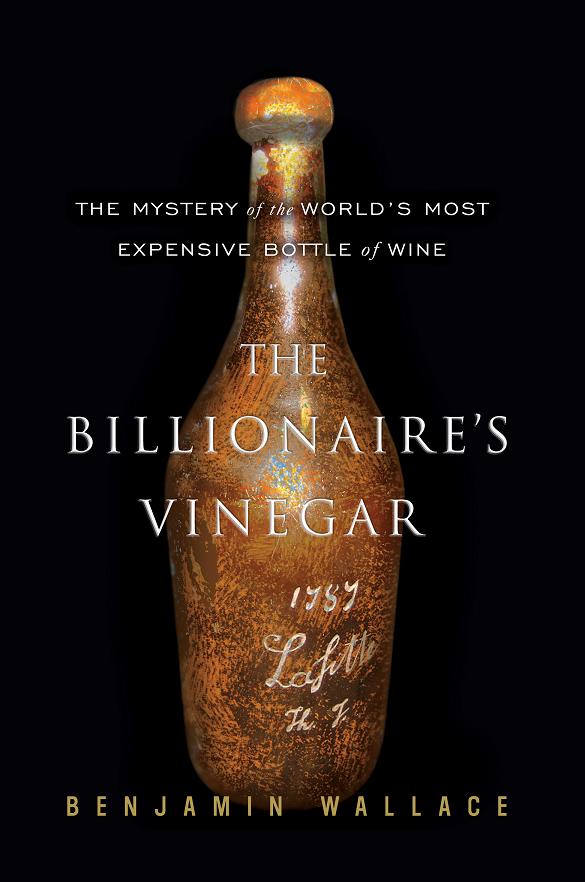The Billionaire’s Vinegar
I don’t get much time to read. I catch up on enterprise software stuff when I can. I read certain wine blogs and books – the usual factual ones that any wino has nosed in and out of. I can’t remember the last time I read a novel. So when Random House sent me an advance copy of Benjamin Wallace’s fact-based novel-style yarn, I didn’t feel obliged to read it. Instead, I gave it to Fred (an avid reader) to see what she made of it – “lacking a firm conclusion” she erm concluded.
But as she quaffed it, sometimes annoyingly aloud, she revealed odd facts here and there that piqued my interest. Curiosity got the better of me and once I started reading The Billionaire’s Vinegar, I must admit it was hard to put down. A two day break in Ireland gave me the time to imbibe every page.
I didn’t like the style of writing. I absolutely acknowledge (unlike some) that Americans can be world class wordsmiths, but Wallace is not. However, he has hit upon a fascinating story that, whilst told in a slightly odd way, is compelling and highly interesting, at least to those with an interest in wine.
It starts out as a thinly veiled character assassination attempt on Michael Broadbent (broadly fails) and Hardy Rodenstock (broadly succeeds). It then explores, not only the title bottle, a 1787 Lafite suspected to be a fake, but also the whole antique wine trade. Wallace plunges his waiter’s friend into the murky world of rising auction prices and twists the cork of temptation that leads the greedy astray during any rising market.
Whilst the writing style is not quite to my taste, the story is well constructed and full of interesting wine facts and factoids that maintained my interest to the very last page. If you are not wine curious. If wine facts, figures, intrigue, and manipulation of antique markets, leave you cold, leave it alone. If you have the remotest interest in wine, auctions, forgeries, or frigged markets, find a weekend, and then lose it in this book.
